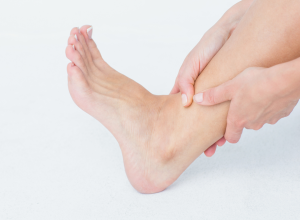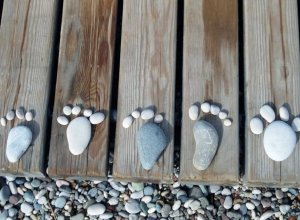
High Arch Foot
A high arch foot, also known as Pes Cavus and supinated foot, is a condition in which the sole of a person’s foot does not flatten while bearing weight. In other words, there is a fixed plantar flexion of the foot, permanently leaving it in a claw-like position in which the heel and ball of the foot bear all of a person’s weight while walking and standing.
Cause
Pes cavus can be hereditary and present from birth, but it can also be caused by surgery, stroke, diabetes, rheumatoid arthritis, cerebral palsy, Charcot-Marie-Tooth disease and other medical conditions.
Symptoms
People will high arched feet often complain of foot pain that sometimes leads to limitation in movement and physical activity like walking. The very high arch can lead to other conditions, including claw toes or hammertoes, metatarsalgia, ankle arthritis, calluses, Achilles tendonitis, plantar fasciitis and pain under the first metatarsal. In addition to foot pain, pes cavus feet can lead to back pain, knee pain, calf pain, frequent tripping and ankle instability. It is also difficult to find properly fitting footwear, as the claw-shape of the foot doesn’t fit into most shoes.
Treatment and Prevention
The most common way to relieve symptoms associated with a pes cavus foot is to wear wide, comfortable shoes with additional arch support from orthoses. Orthotics help to increase the surface contact area of the plantar region, which better distributes the load from walking, running and other activities. The orthotics can also help take some of the pressure off of the heel and ball of the foot.
Before it becomes a debilitating deformity, people with high arches are urged to relieve some of the foot tenderness and pain by massaging the foot and toes, as well as stretching the calves, soles of the feet and metatarsal areas. This will help to keep the muscles loose and prevent further tightening. Soaking the feet in warm footbaths is another way to keep the foot tendons, ligaments, muscles and skin healthy.
Surgery is only suggested as an option if severe pain is accompanied by the pes cavus. Chiropractive manipulation of the feet is another non-surgical option.
Notice concerning medical entries:
Articles having medical content shall serve exclusively for the purpose of general information. Such articles are not suitable for any (self-) diagnosis and treatment of individual illnesses and medical indications. In particular, they cannot substitute for the examination, advice, or treatment by a licensed physician or pharmacist. No replies to any individual questions shall be effected through the articles.









